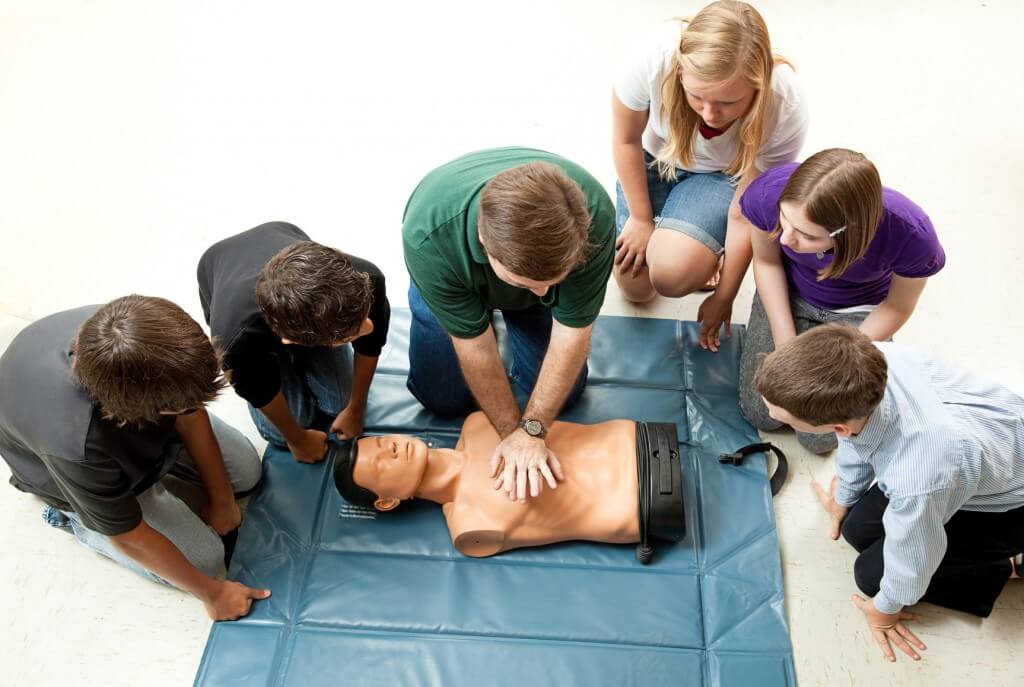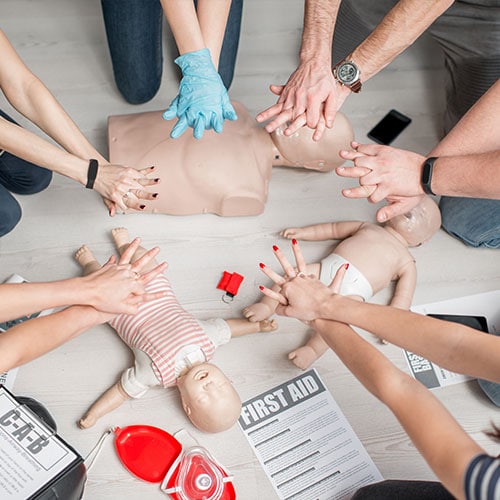Introduction
Cardiopulmonary Resuscitation (CPR) is greater than simply a series of upper body compressions and breaths; it's a life-saving ability that can be the difference in between life and fatality in emergency situation situations. The expertise got from a first aid course or CPR course can equip individuals to react effectively when confronted with a heart attack, choking case, or various other essential emergency situations. This post checks out the real-life applications of CPR, highlighting its relevance and the effect of training on conserving lives.
Real-Life Applications of CPR: When Training Saves Lives
Understanding CPR
CPR is an important emergency situation treatment used to maintain mind feature until further procedures are taken to restore spontaneous blood circulation and breathing. It entails two parts:
Chest Compressions: These simulate the heart's pumping action to preserve blood flow. Rescue Breaths: These provide oxygen to the lungs, necessary for survival.The efficiency of mouth-to-mouth resuscitation significantly increases when performed immediately after cardiac arrest. Researches reveal that prompt CPR can double or triple the chances of survival for victims.
Importance of Emergency treatment Courses
First aid courses equip individuals with crucial skills past CPR, consisting of wound treatment, identifying strokes, and taking care of cracks. By taking part in these training courses, you're not just discovering emergency situations; you're preparing on your own to act emphatically when it matters most.
Key Parts of First Aid Courses
- Basic Life Assistance (BLS): Covers adult, youngster, and infant CPR techniques. Choking Alleviation Techniques: Consists of back strikes and abdominal thrusts. Wound Management: Just how to clean up and dress injuries properly. Recognizing Emergency situations: Understanding when to call for aid versus taking care of a circumstance independently.
The Duty of CPR in Heart Attack Situations
Every year, hundreds of thousands experience heart attack outside health centers. Without immediate intervention, the survival price goes down drastically every min that passes without CPR.
Statistics on Heart attack Survival Rates
|Time Without mouth-to-mouth resuscitation|Survival Rate (%)|| ------------------|-------------------|| 1 Min|90|| 5 Minutes|50|| 10 Minutes|10|
Source: American Heart Association
Being trained in CPR makes sure that spectators can action in confidently during these essential moments.
Real-Life Case Studies Showing Effective CPR Application
Case Research study 1: The Quick-Thinking Bystander
In a busy coffee shop one bright mid-day, an individual fell down as a result of cardiac arrest. A nearby diner who had actually completed a first aid and mouth-to-mouth resuscitation course delved into activity. They began administering chest compressions while an additional patron called 911. Within minutes, paramedics arrived and utilized an Automated External Defibrillator (AED), eventually restoring the patient.
Case Research 2: Office Emergency
During a company training occasion, a worker suddenly fell subconscious. Fortunately, numerous colleagues were licensed in both first aid training courses and sophisticated life assistance strategies. Their quick reaction included calling emergency situation services while executing premium mouth-to-mouth resuscitation till assistance arrived.

Why Participate in mouth-to-mouth resuscitation Courses?
CPR courses deal hands-on training that builds self-confidence in your capacities throughout emergencies. Here are some compelling reasons to enroll:
Life-Saving Skills: You learn how to save lives. Boost Self-confidence: Practical exercises aid seal your skills. Certification Opportunities: Numerous courses supply certifications upon completion. Community Influence: Educated individuals contribute positively to society by awaiting emergencies.What Are the Various Types of Mouth-to-mouth Resuscitation Courses Available?
When considering which training program fits your requirements best, it is very important to comprehend the various kinds of readily available courses:
Basic Adult/Child/Infant CPR Course
This training course concentrates on age-specific strategies tailored for adults, kids, and babies with comprehensive hands-on practice on mannequins.
Advanced Cardiovascular Life Assistance (ACLS)
Geared toward health care professionals, ACLS builds upon basic life support abilities with innovative interventions like medicine administration and progressed airway management.

Pediatric Advanced Life Assistance (CHUMS)
Designed for doctor who manage seriously sick infants and youngsters; chums includes circumstances specific to pediatric emergencies.
Online vs In-Person Training
Many organizations now use online components which can supplement standard class understanding yet do not change hands-on method essential for understanding abilities like chest compressions.
Benefits of Having an Emergency Treatment Certificate
Obtaining an emergency treatment certification shows your commitment to security and preparedness in numerous environments-- whether in the house or job-- improving both expert integrity and individual guarantee when emergencies arise.
Career Advantages
Having certification can boost employability in areas such as education, health care sectors, fitness training fields where security is paramount.
Common Mistaken beliefs About CPR
It's necessary to dispel misconceptions surrounding this essential capability:
Myth # 1: "Just Medical Professionals Should Perform mouth-to-mouth resuscitation"
Visit the websiteFact: Any individual can carry out basic life-saving techniques if educated correctly; you do not need clinical expertise!
Myth # 2: "You Can Hurt Someone by Carrying out CPR"
While it's true there's some risk involved-- it's far surpassed by the potential advantages when executed correctly!
Myth # 3: "CPR Is Only Needed For Grownups"
Children likewise require prompt treatments; therefore comprehending pediatric methods is equally vital!
FAQs Concerning Real-Life Applications of CPR
FAQ 1: What need to I do if I see someone collapse?
If you witness someone collapse:
- Check responsiveness Call emergency services Begin doing CPR promptly if they show no signs of breathing
FAQ 2: Just how commonly ought to I renew my certification?
Most companies advise renewing your first aid certificate every two years due to advancing guidelines and practices.
FAQ 3: Can I learn mouth-to-mouth resuscitation online?
While online training courses give valuable information, hands-on practice is needed for understanding abilities properly-- look for hybrid alternatives if possible!
FAQ 4: What are some pointers for doing effective breast compressions?
Aim for:
- A depth of at the very least two inches A rate around 100-120 compressions per minute Allow complete recoil between compressions without raising hands off the breast
FAQ 5: Do I need special tools for performing rescue breaths?
No unique tools is called for! However making use of barrier gadgets like face guards can enhance security while giving rescue breaths if available.

FAQ 6: What duty does AED play in conjunction with CPR?
Automated Outside Defibrillators examine heart rhythm & & recommend whether shocks are needed which significantly raises opportunities of survival when utilized alongside high-quality breast compressions!
Conclusion
The real-life applications of CPR are undeniable; they extend much beyond theoretical expertise into real scenarios where lives are conserved via definitive activities taken by qualified people. Enrolling in a thorough first aid course or attending specialized CPR courses outfits you with very useful skills that could make all the distinction throughout an emergency scenario-- not simply benefitting others yet equipping on your own also! The moment spent today prepares you for whatever tomorrow might bring-- and isn't that something worth considering?